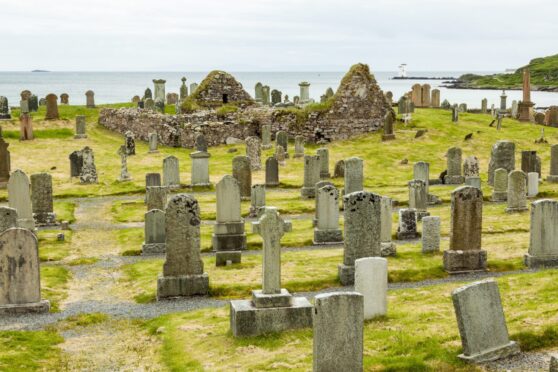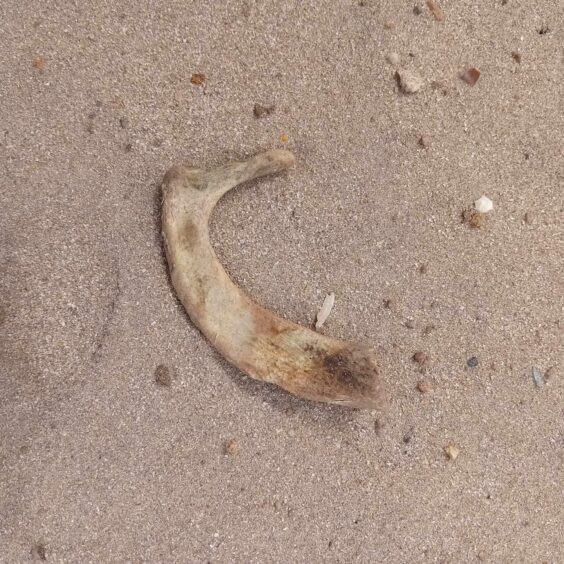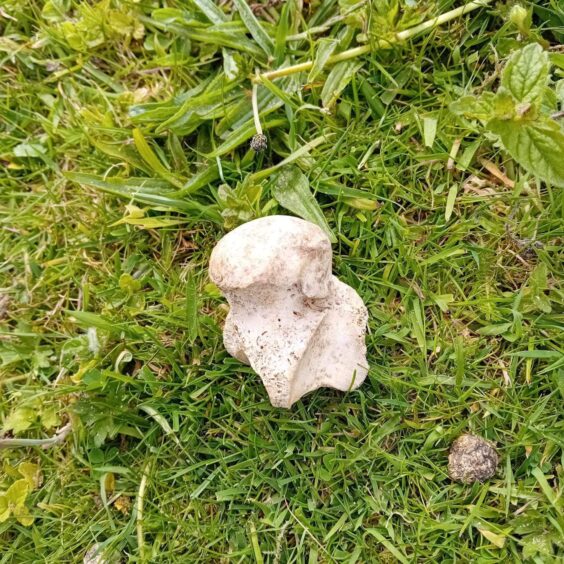Rabbits have unearthed, what are believed to be, ancient human bones at a historic graveyard on the Isle of Islay.
Shocked ancestor hunters found the bones at Kilnaughton Cemetery and reported their concerns to their local councillor.
Kilnaughton Cemetery and its ancient chapel, built in the 1400s, sits to the far side of Port Ellen, near the Port Ellen Distillery.
Last week four Canadians visiting Islay in search of the resting place for their ancestors were shocked to find the bones.
Their tour guide, who reported it to his local councillor, said he was “embarrassed” with the “state of the cemetery”.
Wanting to remain anonymous he said: “Walking by one of my own relative’s graves, I saw part of the spine and jaw bone were lying on the path.
“A graveyard is somewhere where descendants of the deceased can come and pay their respects and not be faced with something so macabre.”
‘Deeply concerned’ about bones found in Islay graveyard
Among the many graves at Kilnaughton are those of 10 military personnel with casualties from both the First and Second World Wars.
They are preserved under the Commonwealth War Graves Commission.
Councillor Alastair Redman said he was “deeply concerned” at the condition of the graveyard, and the shocking discovery of exposed bones.
The Independent Argyll and Bute councillor said “numerous” concerned families had contacted him to ask that something be done urgently.
While he said it could not be verified if the bones were human or not, Mr Redman said: “If these are human remains that have been found in a graveyard – whether they are ancient or not, are a cause of distress for people.
“People should have dignity in death.”
Islay Graveyard local legend
Local legend suggests that one of the gravestones is a cure for warts if you use water gathered in the crook of the “Warrior’s Grave”.
Mr Redman continued: “I am appalled by the extent of the damage caused by rabbits.
“The graves are in a deplorable state, with significant rabbit digging visible throughout the cemetery.”
The Kintyre and Islands representative explained: “I understand controlling the rabbit population in a cemetery is a challenging task for councils.
“However, at the very least, the council should ensure that any human bones unearthed by the rabbits are promptly cleared.”
‘We monitor the cemetery regularly to keep it tidy’
A spokesperson for Argyll and Bute Council was keen to note Mr Redman’s concerns.
In a statement, a spokeswoman for the authority said: “Protecting our cemeteries is something we know is important to our communities.
“We do everything we can with the resources we have available and the conditions within our control.
“We have taken a range of actions over the years to try and reduce the rabbit population within the cemetery.
“This includes trapping animals, and rabbit-proofing the gates and land with wire nets.”
She said: “Sadly, the net was vandalised.
“We can’t do this alone. To tackle the issue long-term, we require neighbouring landowners to support us and play their part by controlling the wider rabbit population on their land.”




Conversation